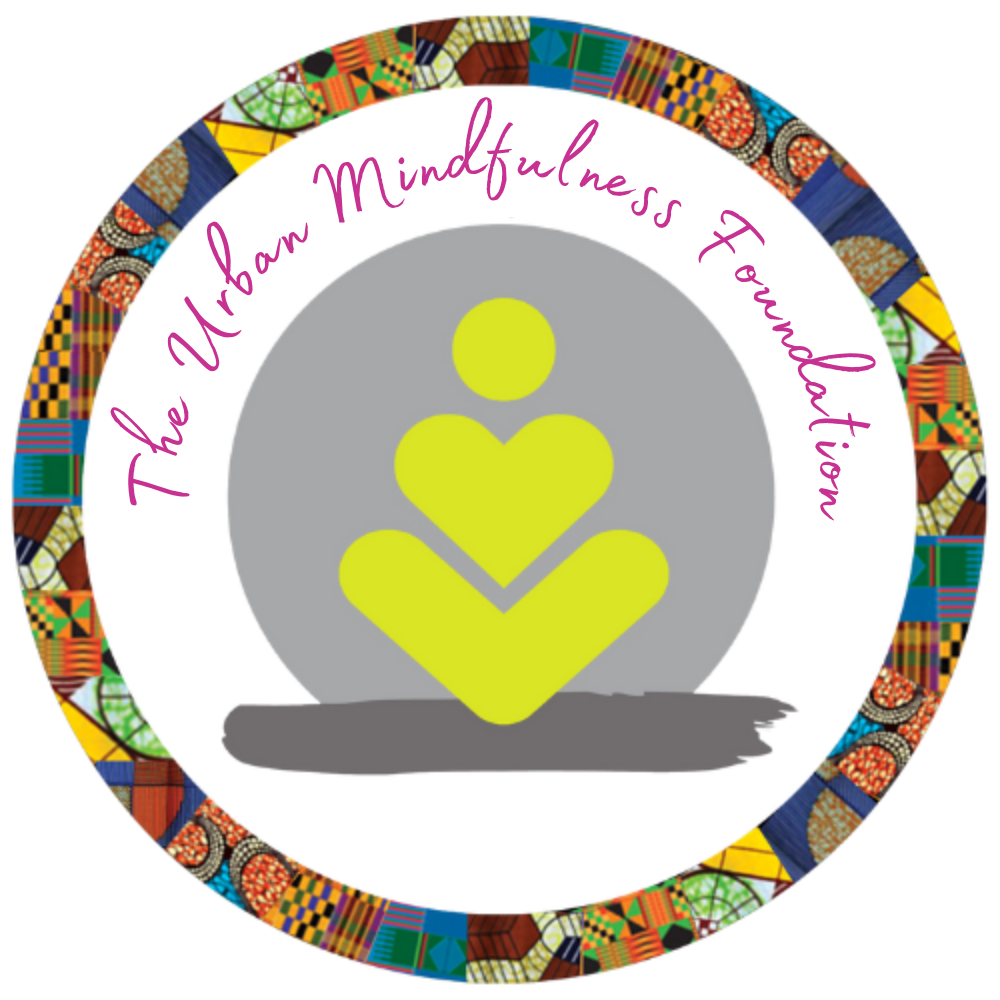Inclusive Social Mindfulness -
Beyond the Basics - An introduction to The Urban Mindfulness Foundation’s MBIT and Social Mindfulness Maps
The field of inclusive social mindfulness is still emerging, and we might each have a view about what inclusive social mindfulness is or should be. Consequently, as part of the Mindfulness-Based Inclusion Training (MBIT) programme, we utilise the following inclusive social mindfulness maps that we designed to help communicate and summarise what we mean when we talk about inclusive social mindfulness. We also hope that the maps aid others in the navigation of some important topics and language that delves deep into our interconnected existence.
It is important to say that these models are what we describe as a conglomerate of ideas and insights taken from educators, practitioners and mainstream thinkers both within and external to the field of mindfulness practice and the social sciences. However, we would like to acknowledge specifically David Forbes for introducing us to Integral Theory and the works of Ken Wilber, Graeme Nixon for introducing the foundations of the cornerstone of the social sciences, Annick Navejan, who introduced us to system theory, Meg John-Barker, who coined the phrase social mindfulness and Rob Nairn who introduced us to the hidden wreaths concept.
Whilst the social mindfulness maps offered are packed with detail and potentially a little complex to look at initially, we have carefully crafted these maps over some time to share the depth and complexity of what may be explored in an inclusive, socially focused mindfulness programme. It is also important to say that the maps were not really designed to be teaching aids or items for self-study rather, they were designed to communicate the complexity of the lived experience visually whilst also implicitly guiding language and mindful dialogue or discourse that allows for the lived experience to be expressed and understood more easily.
As such, the maps are offered to facilitate a constantly moving and ever-deepening mindfulness practice that is true to the nature of our wholeness and interconnected lived experience alongside the need for compassionate actions that address the limitations of hyper-individualism through a process of building human solidarity.
Social Mindfulness Map 1
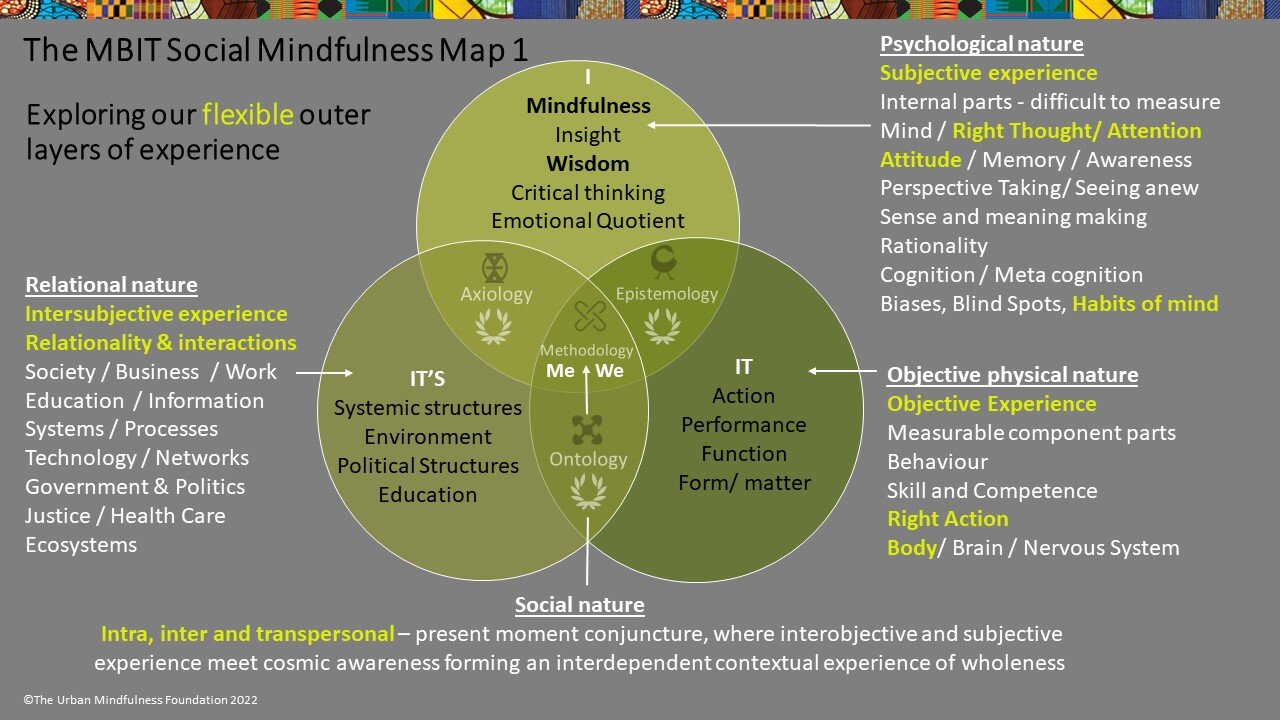
Social Mindfulness Map 1 – Aims to introduce awareness of key areas of experience that are generally flexible and ever-changing. By inviting awareness, conversation and exploration of the relationship between these components or domains as they are often called, it is considered easier to offer reflections on these elements of experience. Read more here….
We describe the (top) light green circle as the ‘I’ circle which represents all the internal cognitive components or psychological elements of mindfulness.
The (right) dark green circle is described as the ‘IT’ circle and covers the physical and biological components of things or matter. This component can include physical behaviors for example of parts of the body or the natural world that we consider to be measurable and experienced objectively.
The (left) mid-green circle is the ‘IT’S’ circle and covers the relational and systemic components of lived experience when the physical and biological components come together in interactions that can be observed.
At the centre of the model is the coming together of these three flexible but totally interconnected elements that are experienced concurrently to create our biopsychosocial existence.
The importance of having a basic understanding of these components in such a model is to facilitate the essential awareness required if we are going to build the skills to rethink, reframe and reimagine our lived experience for the betterment of ourselves and each other.
Without a baseline understanding of these domains of awareness, it is difficult to focus our attention on any element clearly. The result is we risk getting lost in dilusion as we enter such domains of awareness and believe it to be absolute truth or reality. Without such awareness of perceptive experience we can also feel like we are doing the meditation wrong.
As such, this Map offers some insight into where the mind may go habitually in the context of our lived experiences and what the mind might be distracted by. Lasly Map 1 can also invite conversations around why these domains might matter or even be useful to recognise when communicating our experiences with others.
Social Mindfulness Map 2
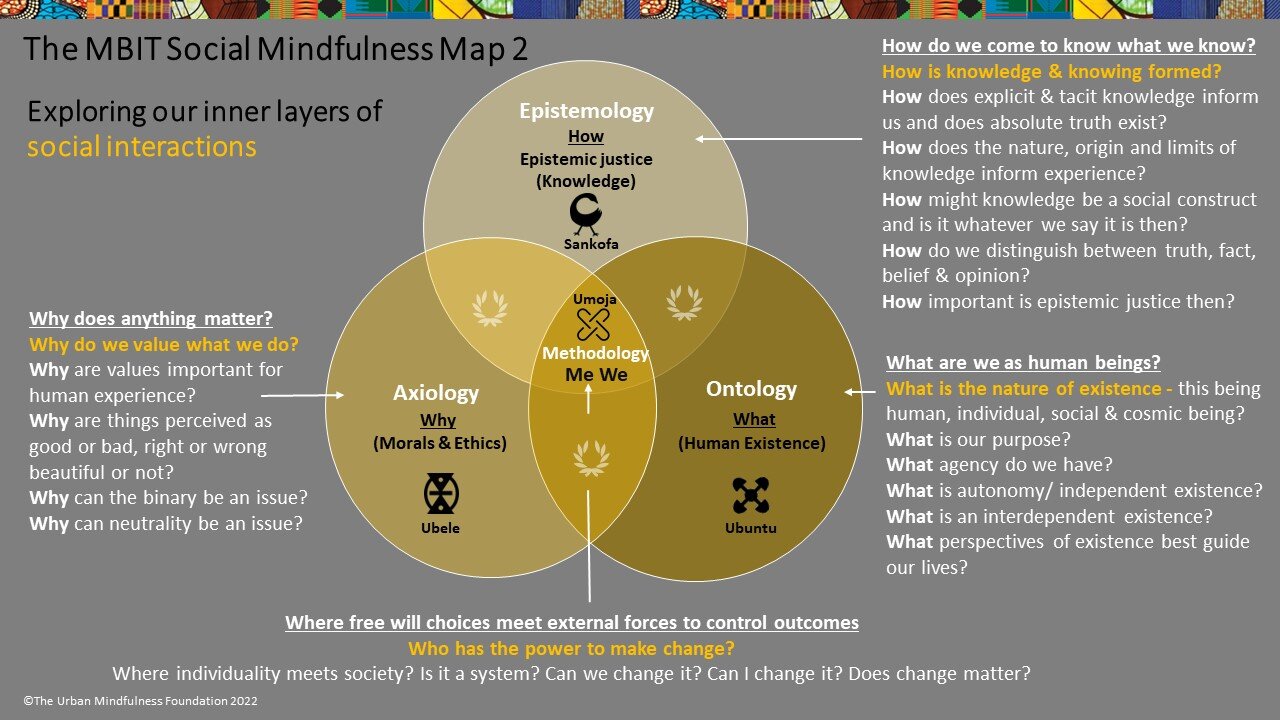
Social Mindfulness MAP 2 – invites us to explore some of the inner, less flexible and perhaps deeper layers of social interaction that shape who we are. More importantly, the map aims to communicate some key, hidden components or domains of our awareness that inform how we navigate our lives. Read more here….
Map 2 also invites us to start to reflect and embark on some courageous conversations, inner reflections and contemplations as a community about: In social mindfulness, these reflections are helpful as they can invite essential insights into the underlying social and cultural conditioning that has shaped us and whether that conditioning still serves us, is useful or inhibiting one’s sense of a bigger self today. Moreover, when we come to examine together how we come to know what we know, how we cultivate a sense of agency and purpose and how, as human beings, our own moral and ethical foundations guide us, we create a unique opportunity and space to re-think, reframe and re-imagine together new ways of being – that we have put at the centre of the model and is represented by our methodology for life. All of which is shaped by the deeper elements of our being and awareness.
Social Mindfulness Map 3
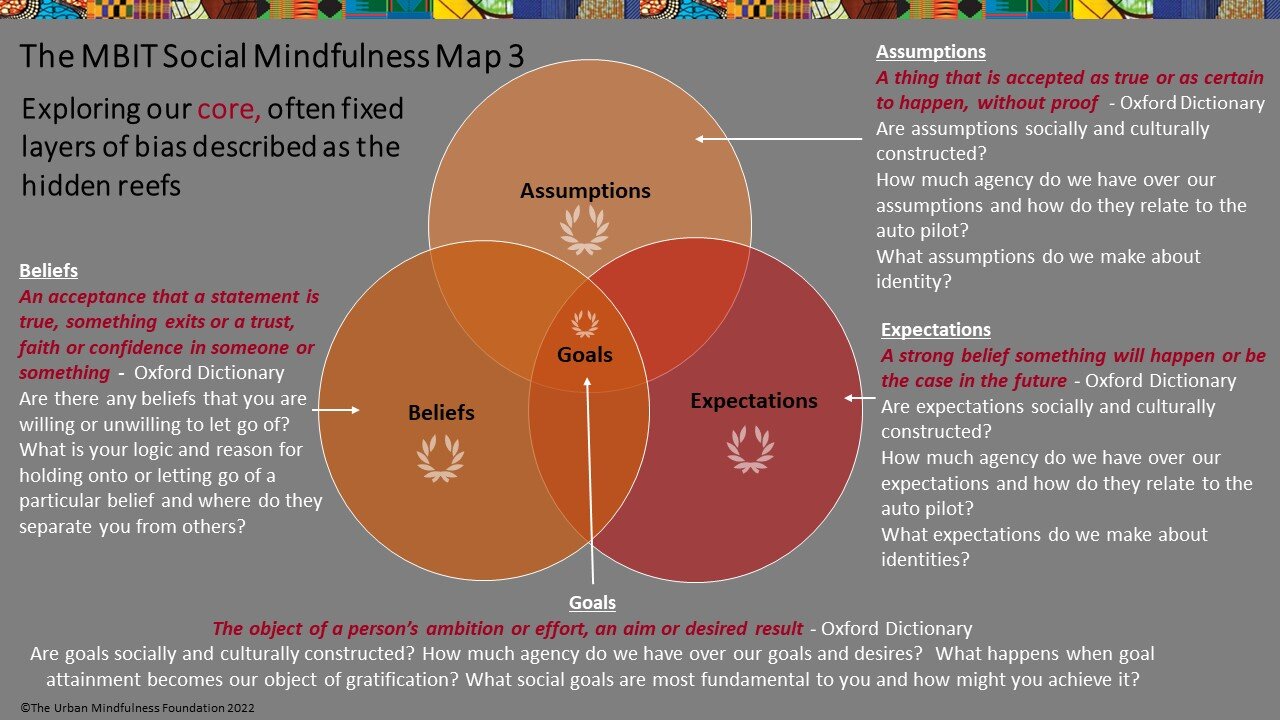
Mindfulness Map 3 – Aims to communicate the most common driving forces that create many of our biases and blind spots. These forces that act within us are totally interconnected with the previous maps 1 and 2, above. However, we bring forward some root words to introduce some of the often most strongly held aspects or layers of experience that can not only go unquestioned in our contemplative practice and daily life, but also can become red lines to our existence that mean we get trapped in tight boundaries and an ever smaller sense of self. Unchecked, these elements can lead to isolation, loneliness and also toxic forms of tribalism that leaves little room for others or the nuances covered in maps 1 and 2.Read more here….
By taking a deeper exploration of what are sometimes known as the hidden reefs of meditation and daily life, we give ourselves a chance to consciously challenge our comfort zone and stretch our learning in ways that lead to transformation. This is particularly important when working in the area of identity-based harm as it is likely we will hear things that do not align with our core beliefs, expectations, assumptions and goals that we will need to grapple with. Awareness of this prior to practice is important if we are not going to shut down or abandon the practice as soon as it touches on any of our core beliefs. Instead, in social mindfulness and the agreements we practice under, we commit to what is called trying it on first before rejecting it automatically. This means staying with it for a while with mindfulness and curiosity to allow for new insights to emerge.
How have we wrapped this up into an
African-Centred Approach
as depicted in the following?
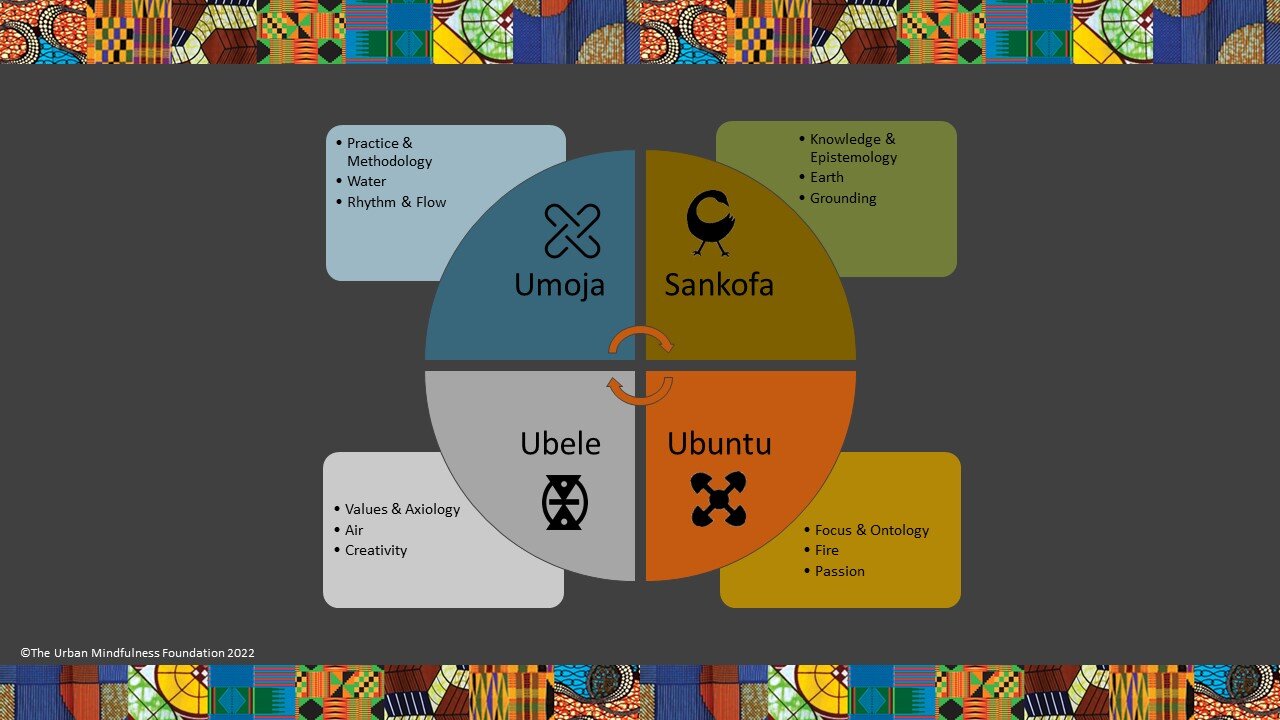
It is important to recognise that the social mindfulness maps offer a Western philosophical framework for understanding the field of social mindfulness that risks perpetuating the sense of hierarchical knowledge that fails to centre or include important cultural knowledge and wisdom from marginalised, underserved, Black, African, Caribbean, Asian and indigenous People of Colour Communities.
Consequently, we have carefully aligned each of the Western philosophical concepts with some key African philosophical counterparts to make it culturally appropriate and relatable.
In particular, we have integrated Adinkra symbols and centred key African philosophical concepts that include all the opportunities for transformative dialogue and change as communicated in maps 1 to 3 discussed above. Read more here….
Importantly, as a process of advocating for epistemic justice and ensuring our programmes are culturally authentic, relevant and relatable to the African, Caribbean, Indigenous and people of global south cultural communities from the offset, we use cultural references known to us to share mindfulness. Moreover, by learning to communicate and relay our experiences with an understanding of the social mindfulness maps and cultural conceptual frames of reference in our African-centred approach to mindfulness, we immediately start to address the knowledge-based power imbalances so often prevalent in oppressive spaces. The result of this is an African-centred programme that is built around the understanding of Umoja, Ubuntu, Sankofa and Ubele.
The importance of humility
“Using humility, we invite acceptance of uncertainty that subsequently activates infinite possibility and potential that facilitates access to greater authentic agency grounded in integrity”
An important part of social mindfulness comprises an invitation to cultivate humility through insight into the limitations of our own perspectives. This is an important aspect of the training as it invites us to be more open to learning through difference as we become more comfortable with the realities of uncertainty flow, rhythm, impermanence and multi-perspectivity as we learn from others.Read more here….
By using the energy of humility, we can then start to let go of some of the socially constructed and conditioned certainties that divide us. Whilst simultaneously recognising the opposite to certainty as infinite possibility and potentiality that offers the courage to step towards a social freedom that also aids the innovation and creativity needed to find new solutions to the social, cultural and environmental catastrophes we face together.
Ultimately the process is about each of us reaching our full and collective prosocial potential and agency, through the practice of humble authenticity, that acknowledges the paradoxes and complexities in our choices that give us and others the permission to be who we are, whilst also knowing that perceived opposites, are in fact in the business of creating each other.
![]()
Contemplating and discussing the intersecting challenges of MBSR for our modern times in the context of race
In 2023 Aesha and Dean co-authored an important paper, Mindfulness-Based Stress Reduction for Our Time: A Curriculum that is up to the Task, alongside its accompanying resource document that highlights the need to explore and centre social and racial injustice and other inequalities in the mindfulness field. The paper was part of a transatlantic collaboration that included Pauline Gibbs, Piers Williams, Michael Waupoose, Zayda Vallejo, Noriko Morita Harth, Robert Callen-Davies, and Rebecca Crane. This passionate interracial group of Mindfulness educators, trainers, teachers and researchers came together through contemplative practice and a deeper wish for prosocial change in mindfulness.Read more here….
In this paper, we critique some of the systemic gaps and imbalances in the Mindfulness-Based Programmes field and present perspectives on ways of both retaining fidelity to the existing MBSR program and simultaneously embracing anti-oppression teaching methods and content and an inclusive recognition of the micro, meso and macro causes and conditions that drive distress and flourishing. In the resource document, you will see how the social mindfulness maps can be explored, amongst other examples or ways of engaging in socially and culturally sensitive practice.
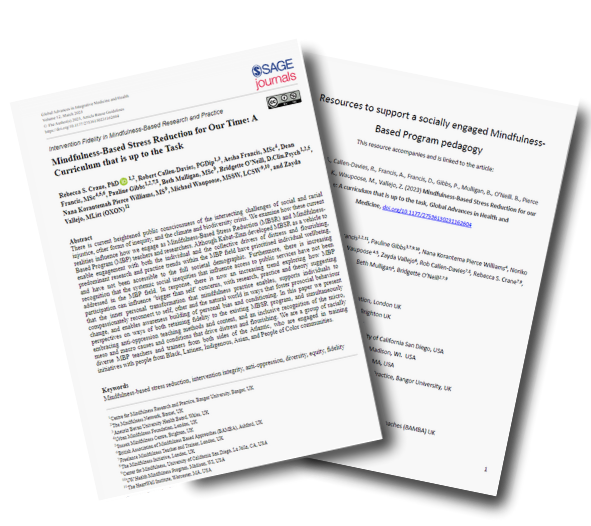
Aesha shares some of our collaborative work with the Mindfulness Association?
Dean shares more about the social mindfulness maps we created to untangle from fixed perspectives
What are the basic rules of our engagement with the MBIT programme?
The Urban Mindfulness Foundation are inspired by many organisations including the East Bay Meditation Centre and Vision Inc. As such we have adopted the the multicultural group agreements from these organisations that include:
- Be committed to trying it on first before rejecting it.
- Its okay to disagree – we are not trying to create consensual truth
- No personal blame, shame or attacks
- Self-focused by using I statements and taking full responsibility for both intentions and impacts
- Be committed to practicing both and thinking and working towards making space
- Be committed to confidentiality – what is said in the room stays in the room
